I’m super lucky to write a regular organic gardening column for ABC Everyday, the lifestyle website of Australia’s national broadcaster — my full story catalogue is linked below for your easy reference.
My stories share practical guides and lessons I’ve learned within my own Tarntanya / Adelaide garden (through trial and a whole heap of error). I also interview awesome urban Aussie gardeners growing organic food in interesting and clever ways.
And yup, there’s usually the odd permaculture theme gently woven in…
Here’s my column catalogue, full of tips to get you growing

Want to eat from your veggie patch each week? Try these strategies
Consistency can be one of the hardest arts to master as a new gardener.
But, after much trial and error, I’m finally eating almost daily from my small urban veggie patch. Here are five strategies I follow.

Thrifty ways I changed my lifestyle to make part-time work possible
Just before turning 30, I decided I no longer wanted to work five days a week.
Working long hours had left me feeling exhausted and burnt out, with little energy left over for family and friends. My work life didn’t feel aligned with my personal values and although the prospect of earning less was daunting, I craved a slower, more mindful way of living.
Fast-forward a decade, and I’m still happily working part-time hours — here is how I made it happen.
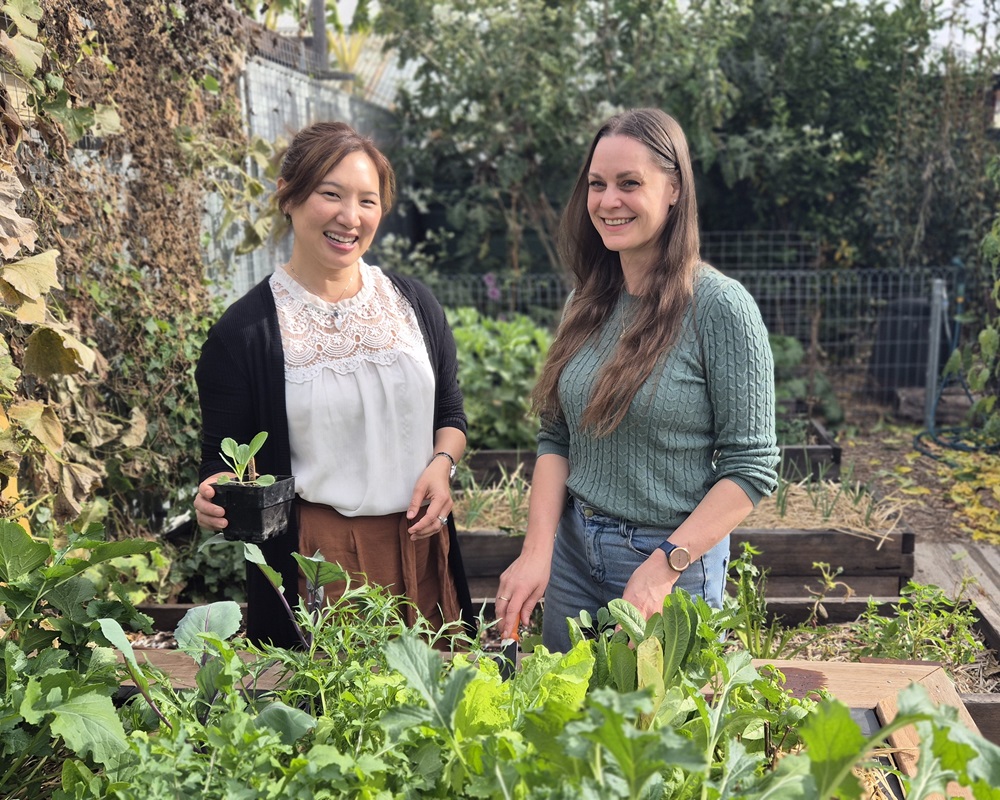
Simple ways to avoid injury while gardening
A decade ago, I suffered a back injury so severe I could barely walk for two months. It was a herniated disc – and to this day, I live with constant low-level pain and the risk of flare-ups.
I’m determined not to let this chronic injury rob me of permaculture gardening. So, I work regularly with Adelaide physiotherapist and acupuncturist Dr Karen Chan to learn ways to build strength and move mindfully. Here are some of the best tips she has taught me.
➔ You can connect with Karen via Prospect Physiotherapy and Health Plus Clinic.

Five gardening jobs to tick off before the end of autumn
The days are cooling, nights are turning crisp, and my veggie garden is calling for one last burst of activity before winter sets in.
Here are five jobs I’m prioritising this season for my backyard permaculture patch, within the temperate climate zone of Tarntanya/Adelaide.

Gardening doesn’t have to be overwhelming. Start by doing one thing a day
As I enter my second year of renovating my house and garden solo, I’ve been feeling a touch unenthused about all the decisions left to make and all the work still to go.
So, to reinvigorate myself, I’m employing what I call the “one thing” rule: try to do just one thing each day.

How I created a ‘hügelkultur’ bed, using free and recycled materials to save money on soil
After building four raised veggie beds in my backyard, I baulked at buying in loads of costly soil and compost to fill them. Instead, I opted for a thriftier route — and filled them up for free using rotting logs and old branches.
It’s called ‘hügelkultur’ (pronounced ‘hoo-gul-culture’), a no-dig layering method often used in permaculture food gardens to create self-sustaining beds.
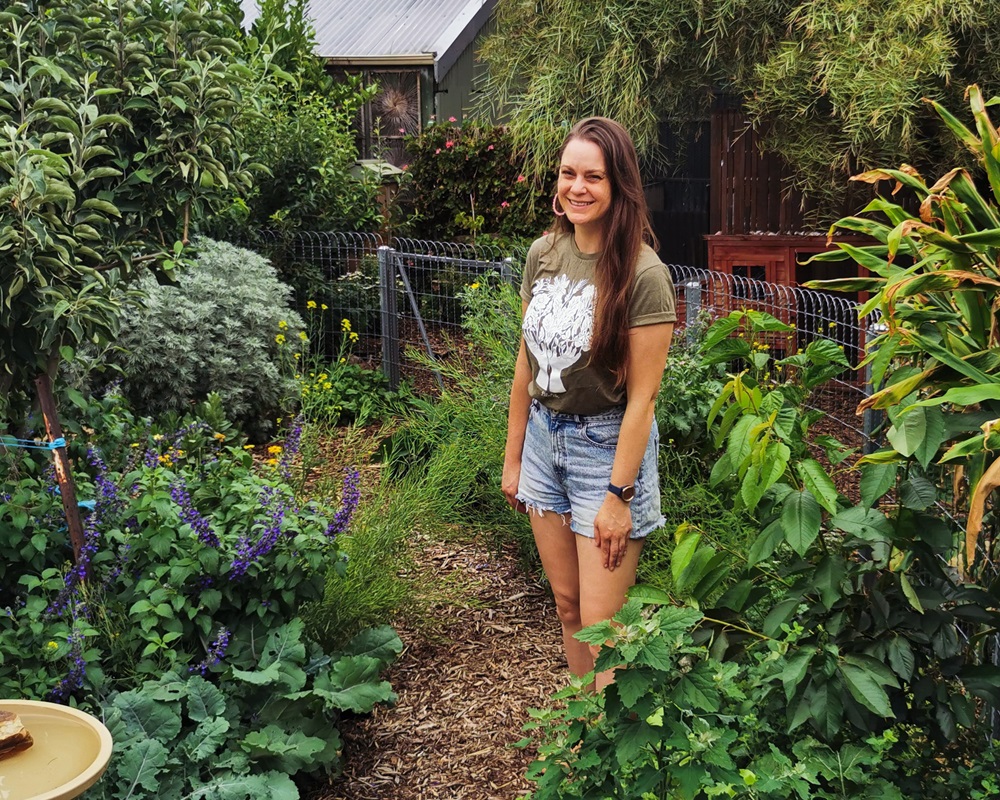
How I created a mini food forest in my small urban backyard
In the small backyard of my urban Adelaide home, I’m creating a mini forest. An edible one, at that.
This is permaculture food forest-style gardening, in which layers of perennials (plants that live for more than two years) are grown together to create a low-maintenance edible ecosystem.
Food forests are also water-hardy, heat-resilient and can be grown in even the smallest of gardens. Here’s how to create your own.
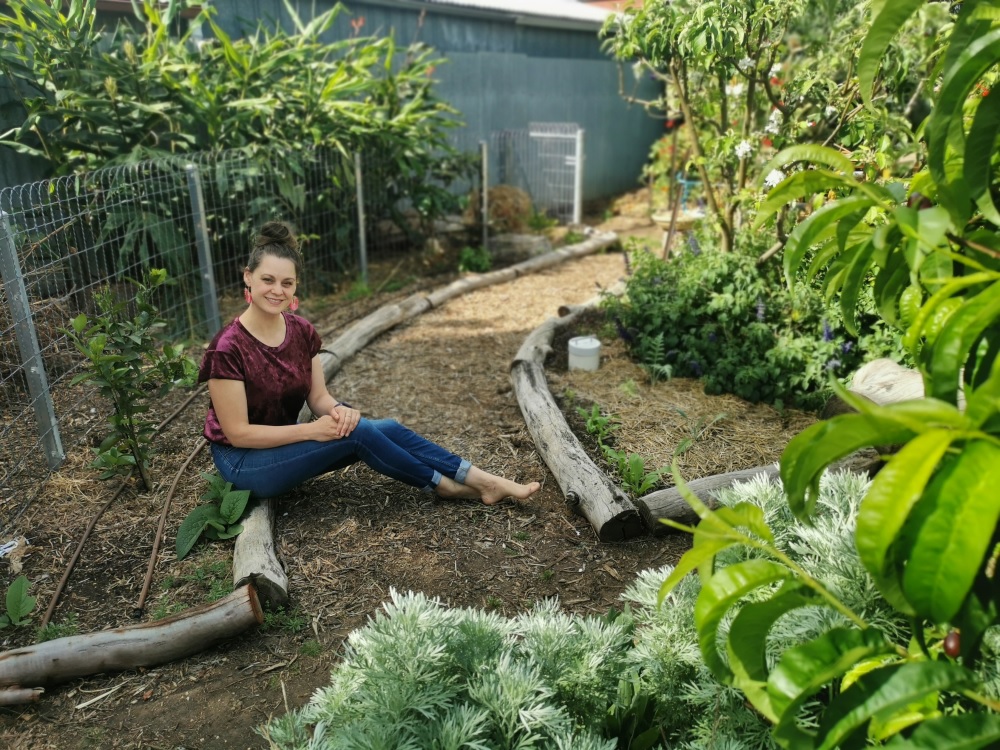
How green manure can help you grow a permaculture food forest
Last autumn, I carefully cultivated a heap of seeds within a new garden bed, only to hack these fledgling plants down to the ground just a few weeks later – and deliberately let them all rot away.
It’s called “green manure” and it’s an easy way to build excellent soil for your veggies or fruit trees, at a very low cost.
Green manures don’t actually involve any animal manure at all. Instead, you create soil food and fertiliser from nothing more than plants.

Nine interest rate hikes later, I’m celebrating my first year of solo home ownership
When my long-term relationship fell apart, I knew I wanted to keep the house my ex and I had bought together. But borrowing more money to take over the mortgage was a terrifying prospect — especially because so much here was half-renovated and unfinished.
Yet 12 months on — and nine interest rate hikes later — I’m celebrating my first year of solo home ownership. Here’s how I’ve made it work.

Build your own soil-free aquaponics garden for leafy greens, chillies, herbs and more
Four years ago, while living in a tiny, inner-city Adelaide apartment, Alexis Branlard and Marion Vigot decided to experiment with an unconventional approach to growing food in a rental.
After getting an okay of sorts from their landlord — “just don’t go crazy,” she said — the pair built their own small and moveable aquaponics system, complete with eight goldfish and a thriving soil-free veggie garden.
➔ You can connect with Alexis and Marion via @CompostableAlternatives
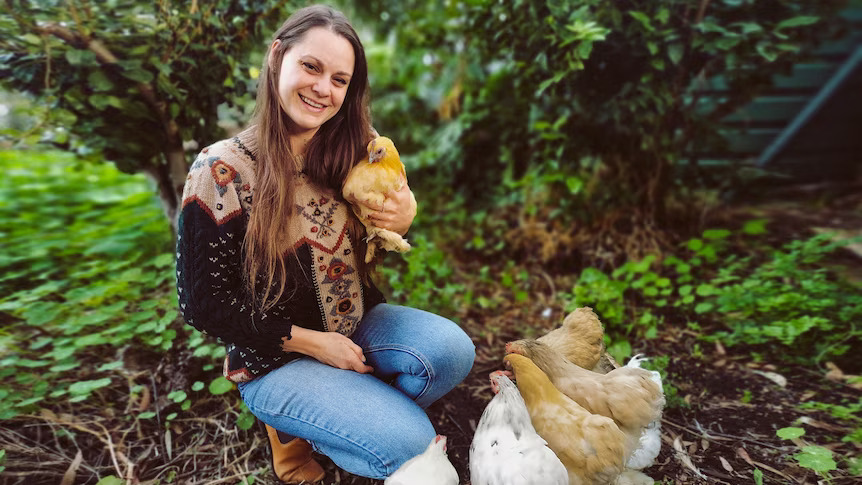
Spoil your flock without breaking the bank: Cheap ways to feed your chickens
My five little Pekin bantams are cherished pets and, in spoiling them with all sorts of extra food treats, I’ve realised I’m also saving money — because I don’t need to buy as much pelleted food.
Turns out, supplementing your flock’s diet with homemade extras is super thrifty, and can also make their eggs more nutritious and delicious. With the cost of living starting to bite, here are some simple ways to feed your hens on the cheap.

Why I decided to grow veggies in straw bales — and fertilise them with pee
This summer, with my garden deconstructed amid renovations, I decided to experiment with a temporary measure: growing veggies in straw bales fertilised by human pee — yes, really.
It was a way to grow food quickly and cheaply in a bed that could easily be removed once I’m ready to build my more permanent permaculture veggie garden.
The experiment was a huge success, with plenty of delicious organic veggies coming off the straw bales and into my kitchen.
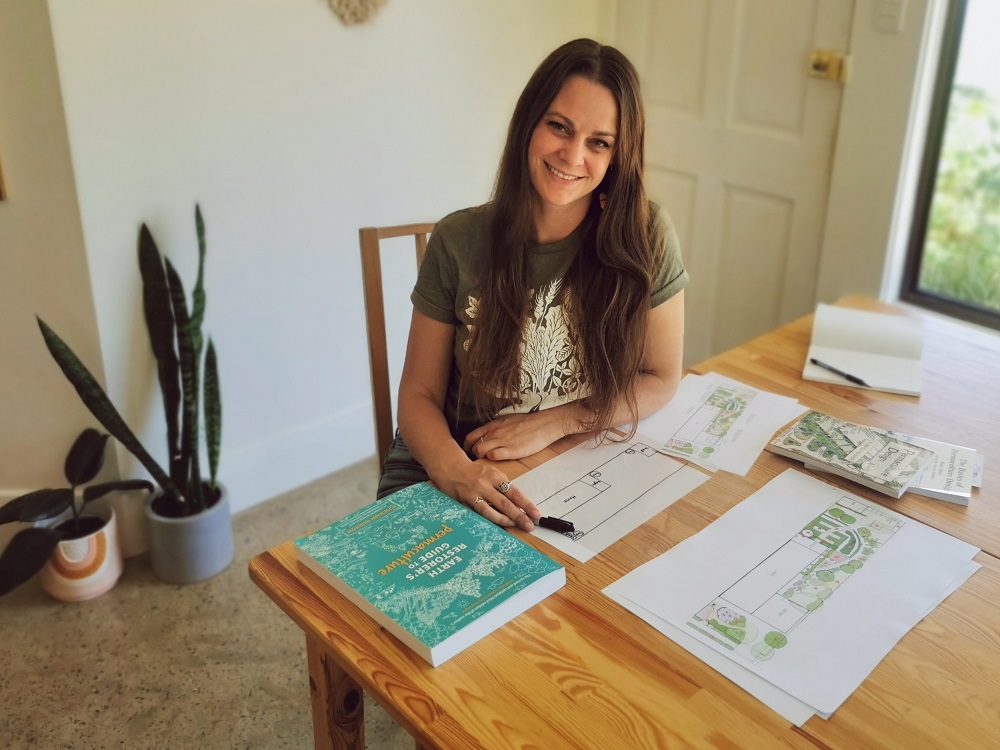
How I’m creating a food-producing paradise on my small city block
This summer, I tore apart my backyard ahead of a major makeover to create a food-producing permaculture paradise on my small city block.
The idea was to invest time and energy in good planning up-front, creating a strategic garden design that will pump out heaps of organic food yet require increasingly less effort to maintain.
Understanding a few key permaculture concepts and jotting down a plan has proven crucial to guiding good design choices – and that same process might help you create a great garden, too, no matter how big or small your patch is.

How to grow edible flowers at home
Next time you’re planting out your veggie patch, spare a thought for flowers — they’re not only beautiful and beneficial insect-attracting, but many are edible and nutritious too.
Geelong-based horticulturist and permaculture designer Michelle Mair has grown flowers to eat and sell for almost a decade — and all from rental properties.
➔ You can connect with Michelle on Instagram.

To create the perfect butterfly garden, I filled my front yard with native plants
Just a few months ago, my front garden was a sea of undulating shrubs bursting with bee-attracting flowers — until I decided to dig up and destroy the whole thing.
My decision to raze the space, albeit temporarily, was made for the butterflies — to provide food for native butterflies and their caterpillars, to be exact.

How I grew leafy greens in two weeks, and foraged for edible weeds too
When lettuce prices first topped 10 bucks a few weeks back, I flinched — and promptly got planting, confident I’d be eating from my own supply within a fortnight.
I chose varieties that grow quickly and are ‘cut and come again’ — meaning you can eat from them gradually over many weeks, instead of harvesting the whole plant in one go.
And I supplemented all this with a healthy dose of foraged edible weeds, which had popped up of their own accord — free.

How Connie’s Chinese veggie garden is helping her connect with her culture
Connie Cao grew up eating loads of delicious Chinese veggies at home — but never really clocked their English names, let alone realised she could grow them in her Naarm (Melbourne) backyard.
All that changed a decade ago when her parents, both immigrants from Shanghai, started a veggie patch and filled it with Asian greens from their childhood.
➔ You can follow Connie’s gardening adventures on Instagram.

How I sustainably renovated my house and saved money too
After buying a rundown 101-year-old bungalow last year, I decided to make only minor fixes to the place — because, in this age of climate change, I couldn’t stomach a “flip it” style renovation.
Instead, and despite a modest renovation budget, I’ve been able to make smaller and more sustainable changes to help my home become more comfortable and energy-efficient.

The secret to perfect homegrown tomatoes
The perfect homegrown tomato is a mind-blowing taste sensation — juicy, sweetly acidic and unlike anything you can get at the supermarket. The trick is picking at just the right time. With tomatoes cranking as we head toward the end of summer, I hit up South Australian farmer Nat Wiseman for his best harvesting, storing and recipe tips.
➔ Nat runs a small-scale market garden called Village Greens of Willunga Creek, which is worth checking out.

How I bought my rental from my landlord
For almost four years, I dreamed of buying my rundown little rental house. Then, just as I had given up and bid on another place, the sale unexpectedly fell into place. Here’s how it all unfolded.

Sharing gardening tips using Auslan and Instagram
Follow Karin O’Reilly’s Instagram account and you’ll learn a heap of simple hacks for successful food gardening — and possibly pick up some Australian Sign Language (Auslan) too. Karin is a gardener, teacher and interpreter from Speewah, in Far North Queensland, who records and publishes all her gardening how-to videos twice — in English with captions and then separately in Auslan.
➔ You can watch Karin’s awesome videos on Instagram.

How to use plants to keep your house cool this summer
After moving into a rental without air conditioning, we sweated through one blistering summer before realising we had to get creative — and learn to use plants to keep our house cool. Turns out strategically growing plants against certain windows and walls can help block heat and act as a kind of living air conditioner. A free one, at that.
➔ Thanks to our friends Folk of all Trades for the pic of their hops shade screen, included in this article.

Creating an accessible veggie patch for gardening in a wheelchair
Like so many Aussies, Rhiannon Tracey felt compelled to take up gardening as the pandemic gained speed last year — so she went searching for the best wheelchair-accessible garden bed. The Geelong 32-year-old, who became a paraplegic in 2009, offers her tips on the two types of veggie beds she’s discovered are best if bending or crouching are not an option.
➔ You can follow Rhiannon’s adventures on Instagram.
➔ And Vegepod raised garden beds are the brand she particularly loves and swears by.

Five ways to find summer seedlings for free
Springtime means action in the veggie patch, with many seedlings needing go in right now to ensure a bumper summer harvest of tomatoes, pumpkins, zucchinis and the rest. But buying all those baby plants can get expensive — and might be near-impossible if you’re in lockdown. Luckily, there are cheaper and even free ways to get seedlings sorted for summer…

How to start growing mushrooms at home
Out the back of his Lismore rental, in northern New South Wales, Joel and his sister Chez are “vertically farming” inside their shed — growing enough nutritious oyster mushrooms in stacked buckets to feed both themselves and their local community.
➔ You can follow Joel’s work via Swap and Grow Mushrooms. And you might also like to check out Young Farmers Connect, a non-profit Joel founded.
➔ And if you’re keen to learn to grow, this Milkwood Home Mushroom Cultivation course is ace!

What is sun mapping and how can it help homegrown veggies thrive?
Edible plants need sunlight to grow — the more of it, the better — yet the sun changes position across the seasons, dropping lower in winter and throwing longer shadows across the earth. Here’s how to map the sun to work out which spots are best to grow food at your place.

How to grow vegetables and fruit trees while renting
Anna Matilda has lived in seven different rental houses in the past decade — and sustained a thriving veggie patch at each one. Her secret? The Naarm (Melbourne) permaculture gardener grows almost all her food in pots.
➔ You can follow Anna’s work via The Urban Nanna.

How to use fertiliser in your vegetable patch
For about two years I produced sad little vegetables from my backyard patch. Finally dawned on me — the importance of fertiliser. Because turns out, compost alone won’t make for lush produce. Here’s what to do instead.
And — I’m on the hunt for stories! Do you fit the bill?
Are you a youngish food gardener (roughly aged 25–40) growing loads of organic food?
I’m always looking for interesting people to feature in my Q&A pieces, particularly folks growing veggies in urban backyards or very small spaces. If that sounds like you or someone you know, please get in contact.
And a big thanks to the ABC Everyday team and my editor Sonya Gee for giving me this ace opportunity.
![[Video] How to build a business that values people, planet and profit](https://korenhelbig.com/wp-content/uploads/2024/08/How-To-Build-A-Business-That-Values-People-Profit-The-Planet-an-interview-Koren-Helbig-and-Honey-Atkinson-1-500x383.png)
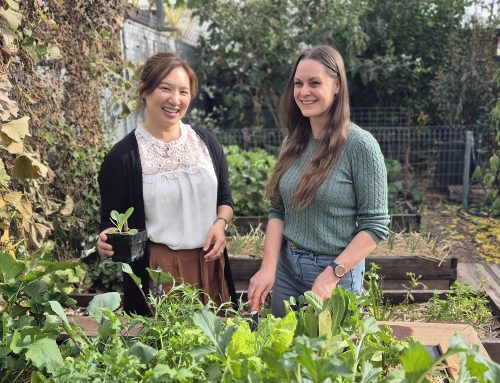
![[Podcast] Work/rest balance — a Reskilliance chat with Catie Payne](https://korenhelbig.com/wp-content/uploads/2024/08/Reskilliance-podcast-cover-500x383.jpg)

